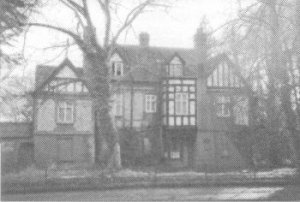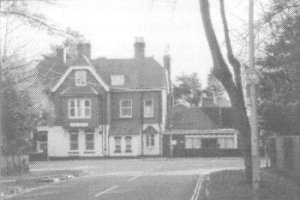Development Control Committee - TrustNews Spring 1998
In development control terms perhaps one of the most disturbing recent events was a House of Lords ruling that followed a lengthy court case. The general effect of this is to loosen considerably a Local Planning Authority's control over partial demolition both in conservation areas and to listed buildings. Now, for example, walls can be altered, windows widened and chimneys demolished and consequently elements essential for the preservation of the character of a building or conservation area may be at risk. Thankfully, it seems that central government has appreciated the dangers arising from the Lords' decision and the situation is likely to be reviewed later this year.
It is fortunate that planning controls are not always the only way of protecting the local environment. Following wind damage to the suspended lights in Kingsgate Street the Hampshire County Council (HCC) propose to replace them with new ones fixed onto nearby buildings, at the same time increasing the level of illumination to meet the standard now considered acceptable. The minimum level required by the relevant British Standard would mean an intensity of lighting that would be both damaging to the historic character of the road and unacceptable to the local residents. While welcoming the removal of the lights hanging over the road and recognising the sensitive siting of the lamps on the listed buildings, the Trust joined the residents in objecting to the proposed increased number of lights. A quirk of planning legislation then became apparent: this only applies to the new lights in terms of their effect on the appearance and character of the listed buildings but cannot control how they affect the conservation area as a whole because they conform with the national standard. Ultimate control did however rest with Winchester College because they owned the listed buildings onto which the lamps are to be fixed; they granted wayleave for the fixing of only every other of the proposed lights, to be reconsidered in six months' time.
External influences often have unexpected results on local events. Unspent funding from central government to the HCC has resulted in money needing to be used by the end of the current financial year. Given for Winchester's park-&-ride schemes, our apparently insane method of national accounting means that this money would be lost to the local budget unless some alternative use can be found for the excess funds and we are now suffering the consequences, which include a crop of traffic calming schemes and cycle ways, however undesirable and inappropriate these might be to the local environment.

Bereweeke House,
threatened with demolition for a nursing home
It is all the more disturbing when these accounting "fixes" are compounded by millennium events that can have further detrimental consequences. Desirable though it may be to have cycle ways from one end of the country to the other, why should this endanger the character of Winchester's ancient environment, such as the water meadows of St Cross? And do we really want to have "millennium gates" into Winchester? What is their purpose? Are they intended to mark the 30-mile limit into the city, or its historic boundaries? The thought of stumpy brick piers as seen elsewhere on some approach roads is not viewed with enthusiasm by the Trust, who very much questions the desirability of having such gates in the first place.
Bereweeke Road is currently threatened by three sizeable developments. Although the proposed relocation of the Friary Bowling Club to Westgate School Playing Fields together with its attendant doctors' surgery has been refused, it seems likely that sooner or later some other scheme will be proposed for this site. Various developments have been proposed in the past for Bereweeke House. The present one is for a 43-bedroom nursing home, to which the Trust objected because the large size and bad design of the proposed building and the extra traffic generated would be detrimental to the area. The scheme has been refused by the council and the applicants are now going to appeal. It is also proposed to demolish the Chantry Mead Hotel and build a block of 18 flats (previously 21 flats) with associated parking. The design of the block leaves much to be desired and from the cramped layout of the flats and the lack of facilities provided, it seems this could be a low-cost development. Neither the building nor its density of use seems appropriate here and the Trust objected to this application also; a decision is still awaited.

Chantry Mead Hotel,
threatened with demolition for a block of flats
It seems that some overdue attention is at last to be given to Old Market House, High Street, although it is very sad that such a disappointing refurbishment is proposed. It does nothing to reclaim the original character of this unusual listed building and proposes altering doorways in the side and rear elevations with as little respect to the building's design as did previous conversions. The proposal to bring the shopfront to a position close behind the colonnade was especially disliked, even though evidence was presented that it may have been sited here sometime in the past. We felt that in the present streetscene the colonnade reflects and provides a visual lead-in to The Pentice and that the design of the proposed shop windows and doors bore no relationship to the scale of the front facade of the building (as indeed is the case with the existing shopfronts, but these don't jar because of their siting back from the colonnade), and we therefore objected to this scheme.
Ending on an optimistic note, it is good to see the alterations proposed for The Brooks Centre, since these should do much to bring life to the centre's present "dead" frontage to Middle Brook Street. The proposal by the Royal Oak to transform its service yard in St George's Street into a terrace with planting, new walls, railings and gates, is also very much to be welcomed. This has long been an area which the eye avoids and the mind consequently obliterates and the scheme should do much to improve this unprepossessing stretch of road.
